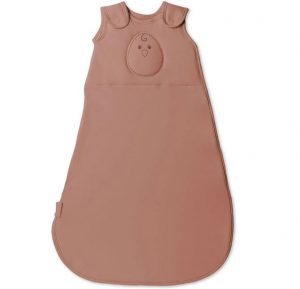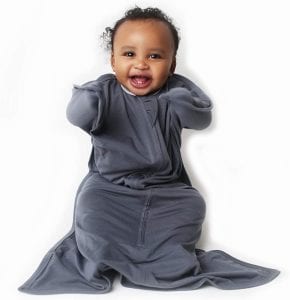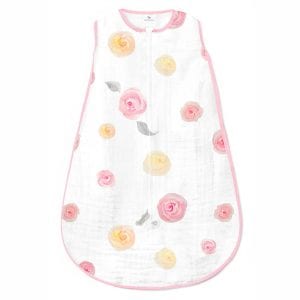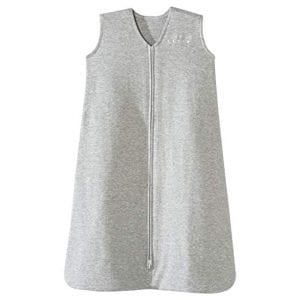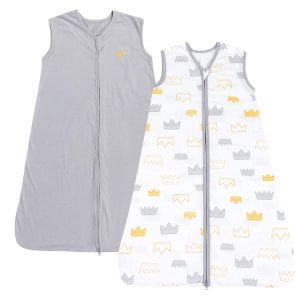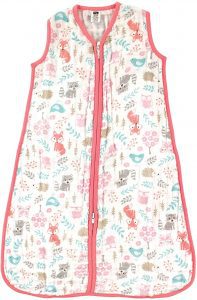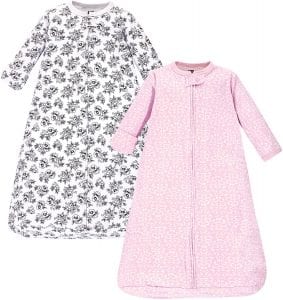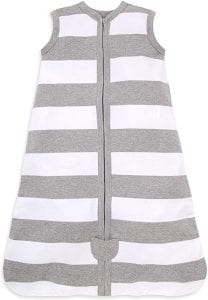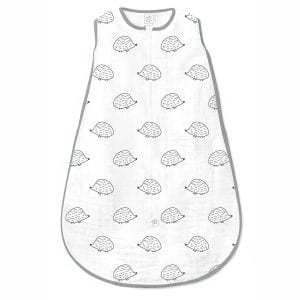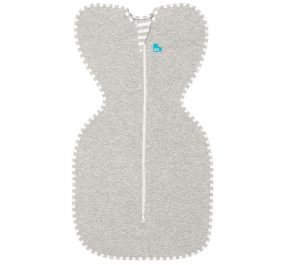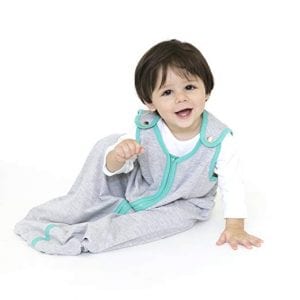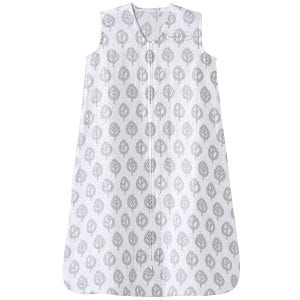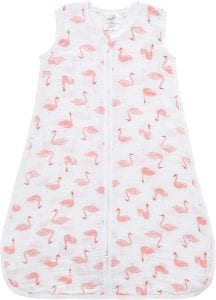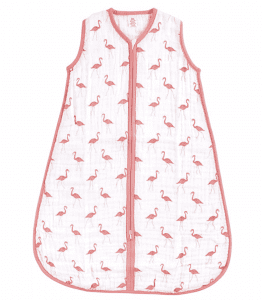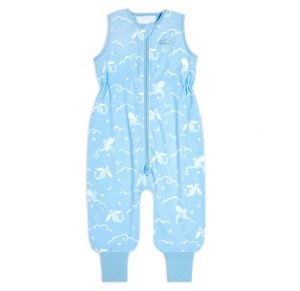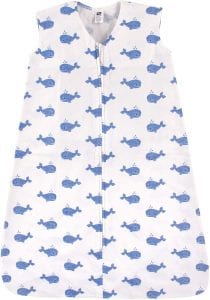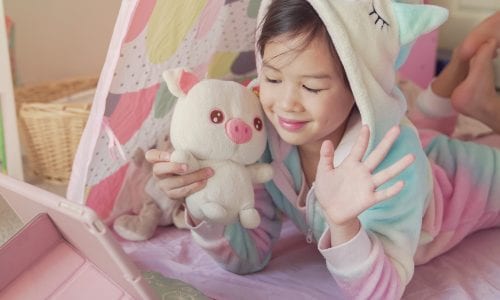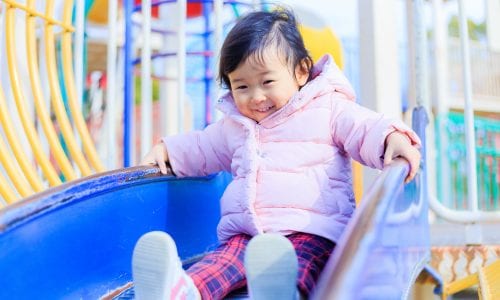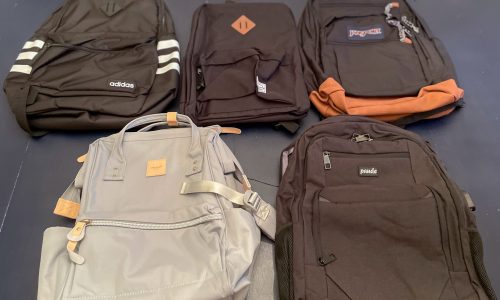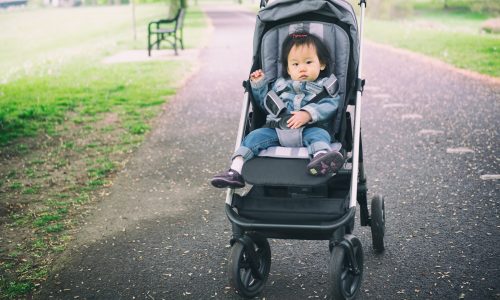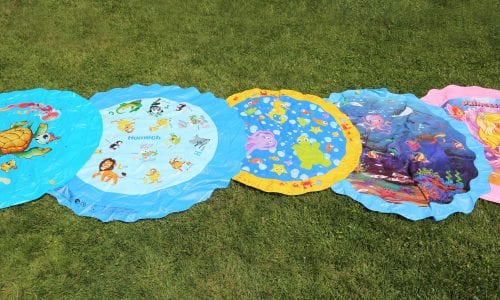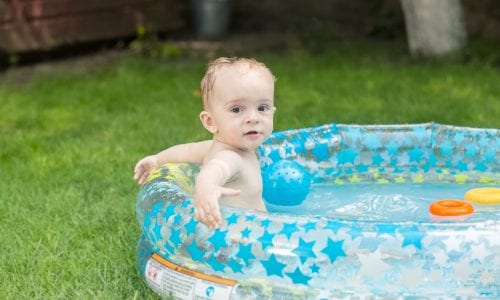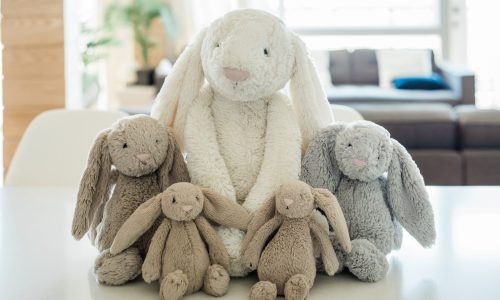The Best Sleep Sacks
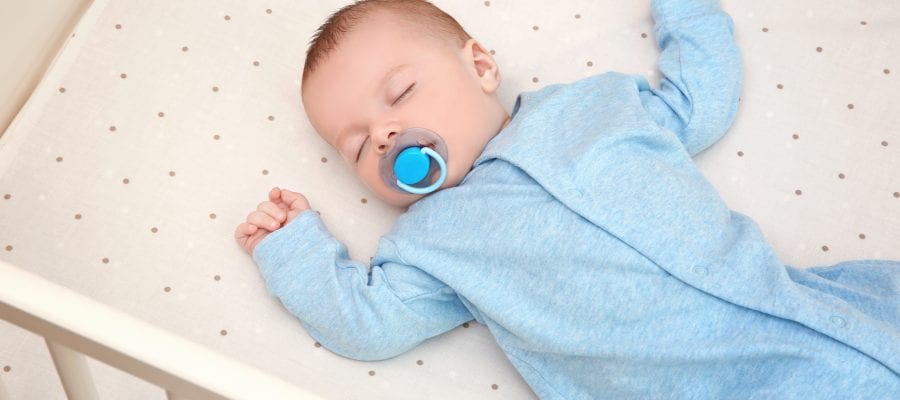
Our Review Process
Don't Waste Your Money is focused on helping you make the best purchasing decision. Our team of experts spends hundreds of hours analyzing, testing, and researching products so you don't have to. Learn more.
Our Picks For The Top Sleep Sacks
- 1. Nested Bean Zen Classic Sleep Sack
- 2. SleepingBaby Zipadee-Zip Wearable Blanket Baby Sleep Sack
- 3. Amazing Baby Two-Way Zipper Muslin Sleep Sack
- 4. Halo Swaddle Sleeveless Sleep Sack
- 5. TILLYOU Ultra Soft Easy Wash Baby Sleep Sack, 2-Pack
- 6. Hudson Baby Machine Washable Muslin Sleep Sack
- 7. Hudson Baby Floral Sensitive Skin Sleep Sack, 2-Pack
- 8. Burt’s Bees Baby Machine Washable Safe Sleep Sack
- 9. SwaddleDesigns Breathable Infant Muslin Sleep Sack
- 10. Love To Dream Swaddle UP Stretch Sleep Sack
- 11. baby deedee Cotton Easy Clean Sleep Sack
- 12. HALO Ultra Soft Cotton Muslin Sleep Sack
- 13. aden + anais Two-Layer Easy Diaper Change Muslin Sleep Sack
- 14. Yoga Sprout Sleeveless Muslin Sleep Sack
- 15. Halo Early Walker Micro Fleece Sleep Sack
- 16. Hudson Baby Soft Jersey Cotton Sleeping Bag
This sleep sack comes weighted in the chest area to provide a little pressure to help baby sleep better. The material is breathable, which means you can use the sleep sack in every season. When you're ready to transition your baby out of swaddling, simply change the handy grow-with-me shoulder snaps.
Features Calming WeightsThis sleep sack starts out fully swaddling your infant, and then changes to allow older babies to move their arms freely.
This baby sleep sack is designed to double as a warm and cozy blanket. The sack doesn't limit your baby's range of motion, but instead helps baby transition from a swaddle. It's created using a unique starfish shape and has just one zipper for ease of use.
Multiple Color OptionsYou'll find this baby sleep sack comes in a choice of six colors, including gray, lavender, mint and rose pink.
Skip loose blankets and opt for this muslin sleep sack instead. It's available in three different sizes and four fun prints. The two-way zipper makes it a cinch to access your baby's diaper when it needs changing, and the open arms allow your baby to move around more freely.
Lightweight and ComfortableThis muslin sleep sack gets softer with each wash.
One of the most affordable and comfortable sleep sacks is this model. Made of soft cotton, this sleeper comes recommended by hospital nurseries as one of the safer sleep sacks. Parents will love the roominess around the sleeper's hip area and the zipper closure for easy diaper changes.
Super Soft CottonBabies have the freedom to move around in this soft sleep sack that is widely used by hospitals across the country.
Buying Guide
Among the many useful items you’ll purchase or be gifted at your baby shower are sleep sacks. Sleep sacks were designed with your infant’s safety in mind to help him or her drift off into a peaceful nap or nighttime slumber.
Safe-sleep expert, Kate Desmond, says sleep sacks are one parenting purchase you will not regret.
“Sleep sacks are the perfect and safe solution for parents looking to provide a little extra comfort or warmth for their sleeping baby,” she says. “We know that loose bedding is a major risk factor when it comes to infant sleep-related deaths. A sleep sack gives parents the ability to provide a cozy environment and warmth without the risk of a traditional blanket. “
You’ll find several different types of sleep sacks on the market, so it’s a good idea to do a little research before selecting one that would work the best for your newborn.
Start off looking for any awards or recommendations that let you know you’re buying a quality sleeper. For example, some brands are listed as the No. 1 trusted choice of hospitals that is used in hospital nurseries all over America. You also want them to be recognized as “Hip Healthy” by the International Hip Dysplasia Institute. Many that have a roomy sack that doesn’t restrict a baby’s legs from moving around have this designation.
“Sleep sacks come in a variety of types with some offering swaddle arms or flaps and others more tank top-like armholes,” Desmond says. “The important thing to note when purchasing a sleep sack is your baby’s size and ability to roll. Once a baby is able to roll you definitely want to opt out of the swaddle variety and switch to the more traditional sleeveless sack.”
Be sure to check out the sleep sack design. Is it restrictive and frustrating, or is it snug in a way that promotes calm? Look for a sleep sack that was created with a patented design that allows your baby to self-soothe. When you place your baby in the sleeper, you’ll tuck his or her arms in the sack in an upward position, which is how newborns tend to place their arms when sleeping on their backs.
Determine if important safety standards were followed and whether the sleep sack has been tested to meet those standards. You won’t want the sleeper to have any toxins. It should be BPA and phthalate-free.
Can the sleep sack grow as your baby grows, or is it meant for just one stage of use? Some sleepers are only for swaddling, while others have removable shoulder snaps to allow for growth. Examine the zipper on the sleep sacks. Although any zipper will do, a reverse zipper is best because it allows for changing your newborn’s diaper without fully removing them from the sleeper. If you’re lucky, your baby will even sleep through the diaper change!
“Sleep sacks get bonus points with me if they have a double or reverse zipper,” Desmond says. “Changing a diaper from the bottom up, instead of top-down is a huge bonus in the middle of the night.”
Desmond advises that you read the washing instructions before tossing your baby’s sleep sack in the wash.
“I found that, when possible, air-drying or a low dryer setting can prevent shrinkage,” she says. “With a fairly hefty price tag, it would be a big bummer if baby outgrew the sack due to laundry error rather than a growth spurt.”
Desmond also advises that you pay close attention to fabrics and weights.
“Make sure when selecting one for your baby you consider the temperature inside your home,” she says. “During certain months, a lightweight muslin sleep sack and a onesie might be perfect. Other times of the year might require something a little more substantial, like a heavier fleece fabric.”
Fashion-conscious parents will be happy to know sleep sacks come in all different colors and designs these days, so you will be sure to find one that matches your taste.
Our Expert Consultant
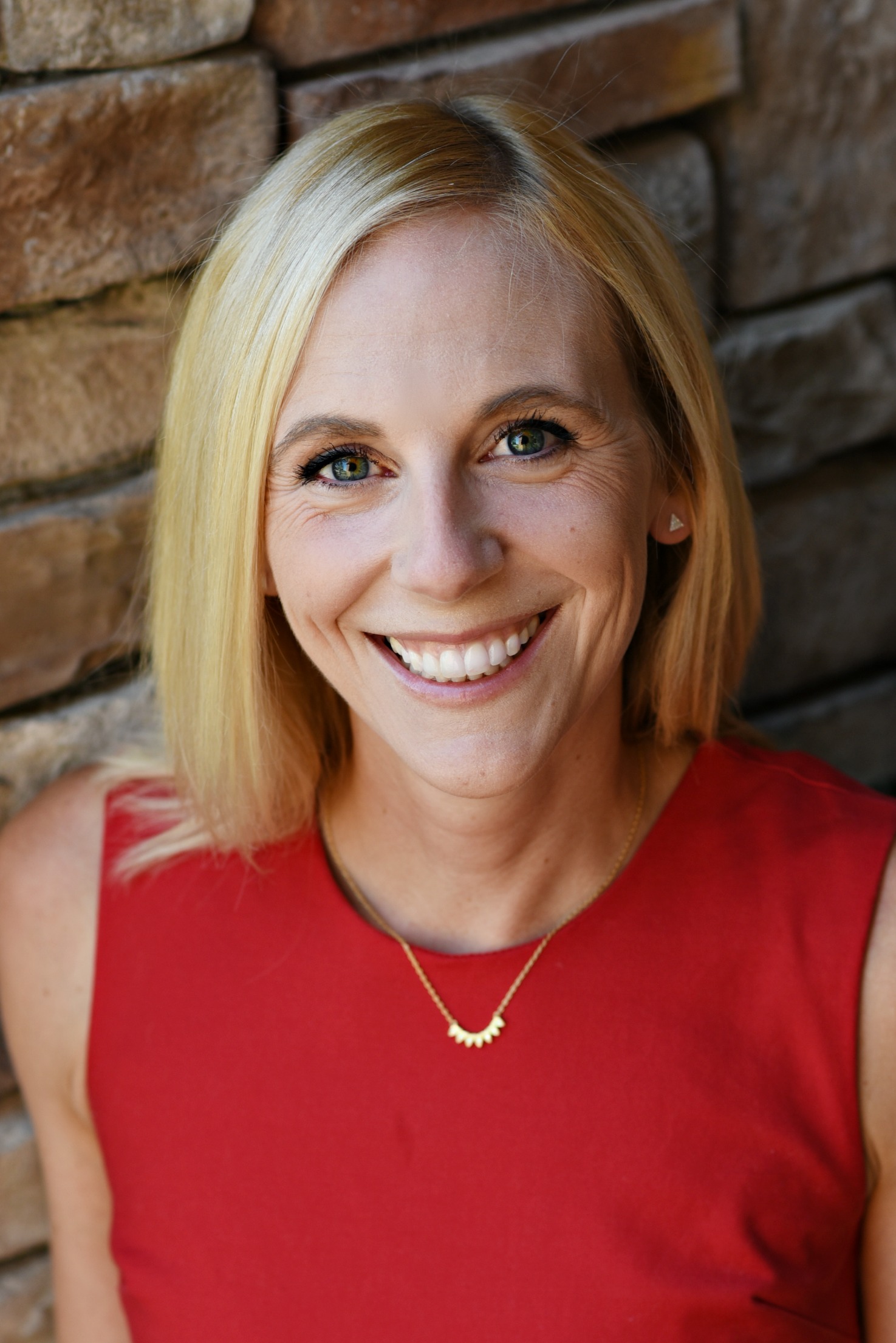
Parenting Pro and Safe-Sleep Expert
Kate Desmond is a writer and infant safe-sleep expert. She has spent the last eight years working as the marketing director for Charlie’s Kids Foundation, a nonprofit that aims to educate families about SIDS and safe sleep. In that role, she travels around the country learning and educating caregivers and providers on the latest and greatest safe-sleep information to prevent infant death.
As mom to two elementary-aged daughters, she spends hours researching the best and safest products for her own kids. She is quick to get in the weeds with other mamas, and uses humor to cope with parenting woes from potty-training to teaching kids to read.
What to Look For
- Sleep sacks don’t need to be washed daily if they aren’t soiled from spit-up or a diaper leak. Instead, you can toss them in the wash once or twice a week when laundering your crib sheets.
- Always check the sleep sack’s tag for washing and drying instructions. Most can be tossed in the washing machine just fine, but require drying on low heat. Of course, you’ll also want to make sure you’re using a laundry detergent that is gentle on a baby’s skin. Find one that is free of dyes and perfumes, or use one that is specifically labeled for use on newborn clothing.
- It’s important to do all you can to prevent SIDS (Sudden Infant Death Syndrome). The American Academy of Pediatrics has several recommendations that parents will want to follow to reduce the risk of SIDS. This includes placing baby on his or her back for the first year of life during nap and bedtimes, as well as using a firm sleep surface and stopping the use of swaddlers once the baby begins to roll over.
- Make sure you are choosing a sleep sack that is appropriate for the current climate. They do make sleep sacks that are thicker for colder winter months and sleepers that are made of lighter fabric for warmer summer months.
- Select a sleep sack based on your baby’s weight, not age. You don’t want the sleep sack to be too tight, which would not only be uncomfortable for your little one, but could also pose a danger. Additionally, you don’t want the sleep sack to be so loose that it doesn’t provide the calming benefit that helps your little one fall fast asleep.
- Look on the sleep sack packaging label to see what stage the sleeper is recommended for, so that you purchase one that matches the stage your baby is in. Stage 1 may be for swaddling, Stage 2 may be for transitioning out of swaddling and Stage 3 may be for independent sleeping.
- You’ll be pleased to discover that when it comes to price, there isn’t much deviation among the various sleep sacks. The Amazon Essentials Microfleece Sleep Sack, 2-Pack, which has the best overall ratings, is one of the most affordable brands. You’ll also find the TILLYOU Cotton 2-Way Zipper Sleep Sack meet expectations when it comes to quality and price.
More to Explore
Did you know that on average moms and dads lose out on approximately six months of sleep by the time their precious little one reaches two years of age? It’s true. Now we know how sleep affects parents, let’s take a look at what it does to newborns!
Although your infant may close his or her eyes a few minutes after you start using the rocking chair, deep sleep won’t occur until 20 minutes later. Baby sleep cycles are 30 to 40 minutes shorter than adults, which is why they wake up more frequently during the night.
It has been shown that parents who have babies who are better sleepers score higher cognitively than babies who don’t sleep as well. They also tend to have a better temperament. Newborns need a lot of sleep because their brains use 60% of their body’s glucose supply.
The average nap for an infant lasts between 1 1/2 to 2 1/2 hours. Babies tend to nap three to four times a day up until age 5 months, then drop to two to three naps through age 9 months. One to two naps are seen up until 18 months of age, however, parents may wish to put their children down for an afternoon nap through the toddler years (2 1/2 to 4 years of age).

